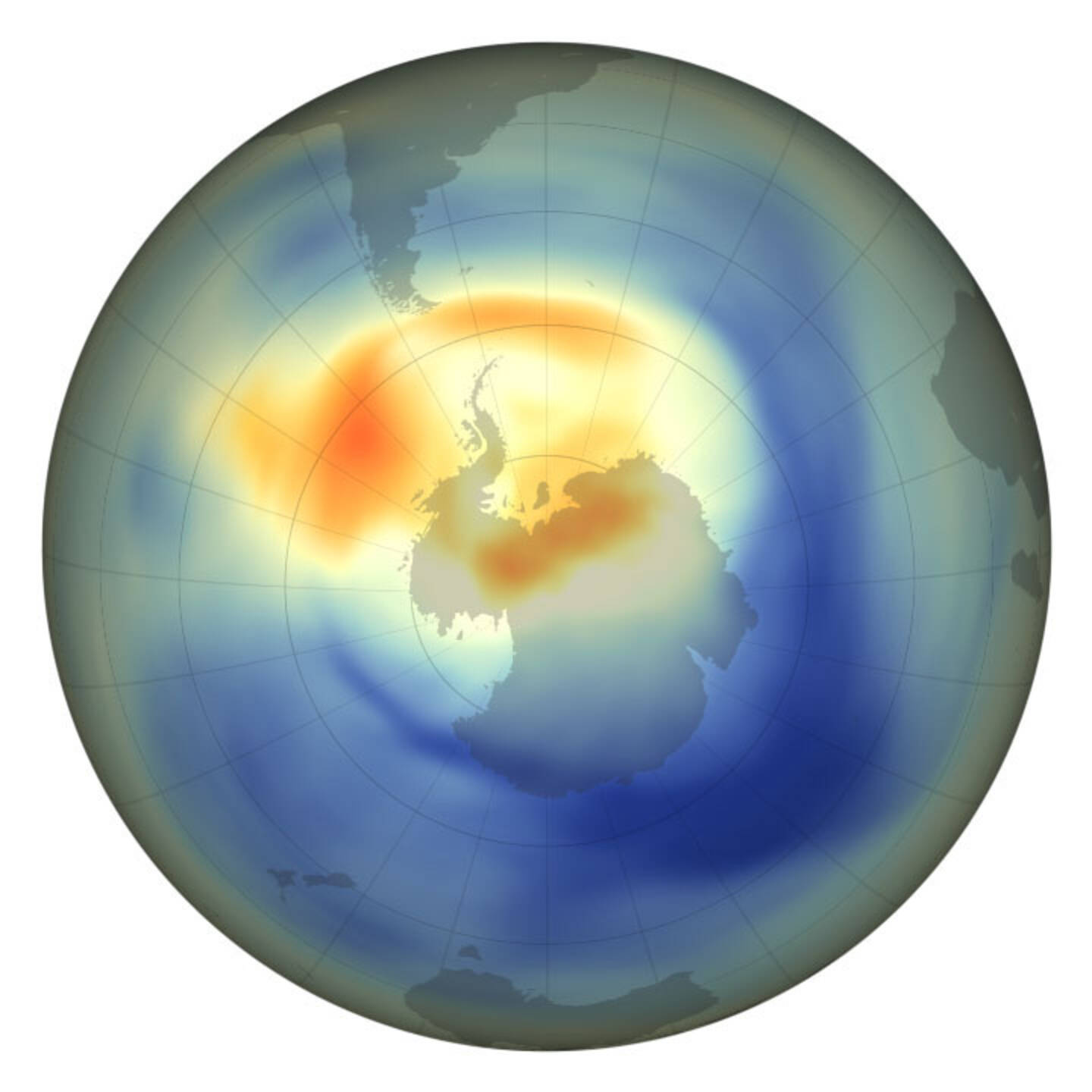
Ozone is a highly reactive molecule composed of three oxygen atoms that occurs naturally in small amounts. Roughly seven to twenty-five miles above Earth’s surface, the ozone layer is a sun screen, shielding the planet from potentially harmful ultraviolet radiation. Antarctic ozone slowly decreased in the 1970s, with large seasonal ozone deficits appearing in the early 1980s. Thirty-two years ago the international community signed the Montreal Protocol on Substances That Deplete the Ozone Layer. This agreement regulated the consumption and production of ozone-depleting compounds. Abnormal weather patterns in the upper atmosphere over Antarctica dramatically limited ozone depletion in September and October 2019, resulting in the smallest ozone hole observed since 1982. The ozone hole reached its annual peak extent of 16.4 million square kilometers (6.3 million square miles) on September 8.
